
Comprehensive Guide to Commercial Roof Repair: Identifying Damage, Avoiding Mistakes, and Planning for Longevity
TABLE OF CONTENTS
Introduction
If you own or manage a commercial building, you understand that the integrity of the roof is vital. Your building represents a significant investment, but that investment can turn into a critical liability if maintenance and repair aspects are neglected. While regular maintenance is crucial, sometimes repairs become imminent and must be addressed immediately. External factors often cause damage over the lifetime of a flat roof, and problems can also surface if a roof hasn't been properly maintained or if the wrong system was initially chosen. Ignoring obvious defects is dangerous because roof damage does not improve over time; the longer problems are left untreated, the more damage can be done to your building.
Roberts Roofing has been a leading provider of innovative commercial and industrial roofing solutions in Cleveland, Ohio since 1981, serving Northeast Ohio companies for more than 40 years.
To protect your property and ensure longevity, you need a clear strategy for addressing roof issues. This comprehensive guide will walk you through the essential steps.
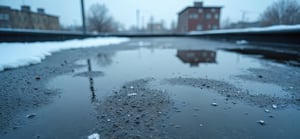
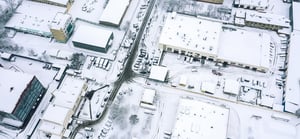
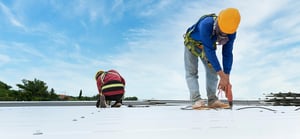
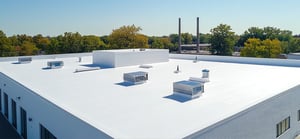
Recognizing the Immediate Signs Your Commercial Roof Needs Repair
Identifying when a commercial roof problem requires immediate attention versus something that can wait is crucial. Oftentimes, the inside of your building may show roof damage before the outside, with common signs including water leakage near a ceiling, mold, or mildew.
Here are top signs that require immediate investment in repairs to avoid more expensive problems later on:
Key Visible Signs of Damage
-
Leaks, Mold, or Mildew: These are clear signs of a failure in your roofing system. Look for dripping water, musty odors, or stained ceilings/walls.
-
Bubbling or Cracking: Bubbles on the roof surface indicate trapped air or moisture, a condition that could lead to the need for a whole roof replacement. If you see cracks or bubbles, contact a professional immediately.
-
Roof Membrane Damage: Standing water is a recipe for disaster for the protective roof membrane. Punctures, cracks, or heat/sun damage to the roof surface may have compromised the roof membrane.
-
Flashing Damage: Flashing is an integral part of the roof system. If you see visible damage to the flashing, this is a "repair right away" item. Damage may include rust, splits in seams, or deteriorated sealant.
-
Drainage System Issues: Storms, nature, or vandalism can wreak havoc on drainage systems. Cracked or loose drain bowls and damaged downspouts should be repaired promptly, and drain cages should be kept free from debris. Blockages or damage to scuppers, gutters, and pipes are common causes of leakage.
-
Damage After Storms: After a significant storm involving wind, snow, hail, or heavy rain, examining your roof immediately afterward can save substantial future repair costs. Signs of storm damage include protruding or bulging patches, damaged roof vents, and damage from debris.

Hidden or Interior Signs
-
Unexplained Spikes in HVAC Costs: Significantly higher heating or cooling bills may indicate leaks in your roofing system, necessitating an inspection as soon as possible.
-
Roof Penetration Damage: Areas where items protrude through the roof surface (such as vents, skylights, pipes, HVAC units, and gas lines) need extra attention, as damage around these areas can compromise the airtight fit and cause leaks.
Small problems can lead to major catastrophes if ignored. If you have identified signs of damage, Roberts Roofing provides regular inspections and post-storm inspections. Schedule your Free Commercial Roof Inspection immediately.
Causes of Commercial Roof Failure and Mistakes Building Owners Make
Commercial roof damage stems from a variety of causes, ranging from unavoidable natural elements to avoidable human errors and negligence.
Primary Causes of Commercial Roof Damage
-
Nature and Weather: Wind, rain, snow, hail, lightning, and burning summertime heat are all enemies of your commercial roof, especially in Northeast Ohio with its variable weather patterns.
-
Age: Even the best roofing systems have a life span, and roofs without obvious signs of needed repair become weakened and less effective over time.
-
Defects: This includes improperly designed or maintained roofing systems, sloppy or shoddy installation work, or situations where the current/old roofing system was not properly installed.
-
Wear and Tear: This usually happens when the roof has not been maintained properly over the years.
-
Vandalism: Some building damage, including roof damage, is deliberate.

Common Commercial Building Owner Mistakes
Commercial building owners often neglect the exterior of the building in favor of the interior.
Three common mistakes include:
-
Lack of Roof Maintenance: Because the roof is "out of sight, out of mind," many owners neglect regular inspection and maintenance necessary to maintain the roof’s integrity. Maintenance saves money by preventing costly repairs. Maintenance activities should include examining drainage systems, checking seams and edges for wear, checking fasteners for integrity, and looking for signs of standing water.
-
Lack of Understanding of Your Roofing System: While owners are not expected to be experts, understanding the age, warranty, and type of roof system (e.g., TPO, PVC, EPDM, Modified Bitumen, Built-Up) can help in proactive care. Knowing how different materials react to time and weather helps owners plan for protection to extend the roof’s life.
-
Cheaper Isn’t (Always) Better: Skimping on costs by selecting the cheapest provider for replacement can be disastrous. Going cheap on materials means the roof is more vulnerable to deterioration, weather damage, and leaks, leading to more frequent repairs and replacement down the line. Cheap roofing materials also often lack the proper insulation, forcing the HVAC system to work harder and increasing energy costs.
When choosing a provider, remember that quality workmanship, attention to detail, and high-quality materials are essential for a successful replacement. Experienced installers are key, as even the best materials may fail if installed improperly. Ensure your maintenance plan is comprehensive. Start with a Free Commercial Roof Inspection to get an honest assessment of your current system.
Should I Repair or Replace? Weighing Your Options
When problems occur, commercial building owners must weigh the pros and cons of commercial roof repair versus full replacement. A professional commercial roofing contractor can guide you through these options.
Roberts Roofing considers four key questions when guiding customers toward the best solution:
-
What is the extent of damage? If the damage is limited to a small area and the majority of the roof and insulation are still in good shape, a repair may suffice, saving money and avoiding lengthy disruptions. However, if 25% or more of the roof is damaged, or if the insulation is wet or failing, replacement is typically more cost-efficient.
-
Where is the damage and how does it affect the building’s use? If damage is located over an area critical to business operations or expensive equipment, and previous repairs have failed, a full replacement or a recover may be necessary.
-
Is the owner looking for a short-term fix or a long-term solution? If the owner plans to sell the property soon and the roof can meet code inspection, minor repairs and proactive patching may be recommended. If the owner seeks a long-term solution utilizing the latest technologies, replacement makes more sense.
-
How much will the work interrupt business processes? If a leak occurs during a business’s busiest season, essential repairs may be done now, with a full replacement scheduled at a less disruptive time.

Alternative Solutions: Recover and Coating
When a full replacement is not immediately necessary or desired, other options exist:
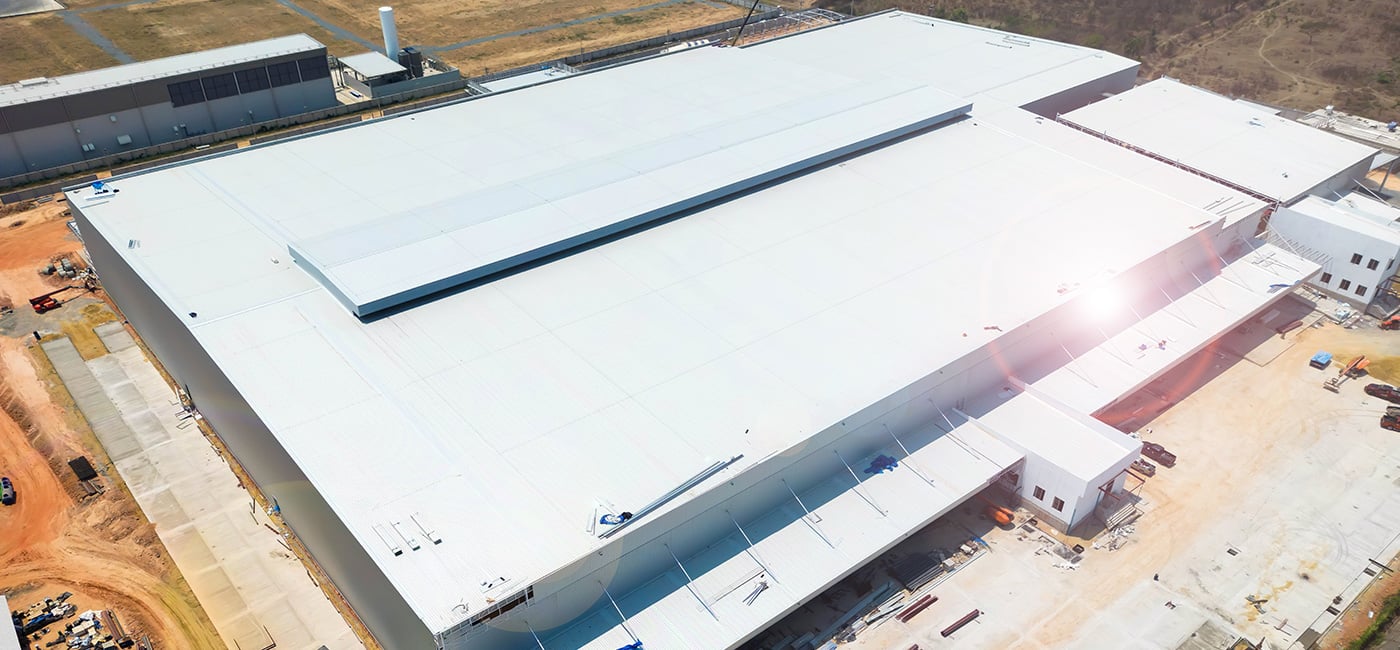
Recover: If the roof needs more than a simple repair but the insulation is still sound, a recover (applying another roof system on top) may be effective, especially if the current membrane has reached its life expectancy. A recover is generally less costly and less disruptive than a full replacement, and new, extended warranties may be available.
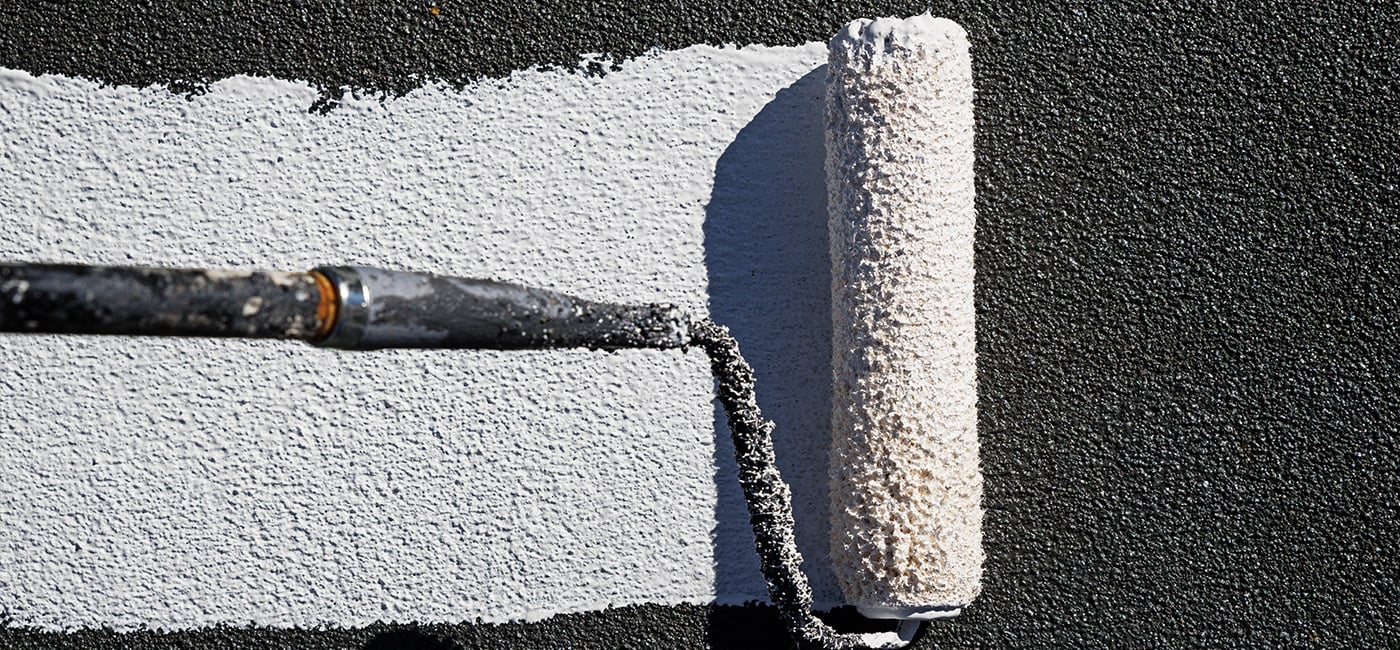
Coating: Applying a cost-effective coating can extend the life of the roof, provide leak protection, and offer better heat protection, potentially leading to a more comfortable interior temperature and possible tax relief in the first year.
No two roofs are alike, so ensure you are not receiving a one-solution-meets-all quote. A professional commercial roofing contractor is the most qualified person to assess damage and guide the best course of action.
Not sure whether to repair or replace? Let Roberts Roofing assess your situation.
Prevention and Partnering with Experts for Long-Term Roof Health
Preventing problems before they start is the best way to curb the chances of needing emergency roof repair or full replacement. This requires both proactive maintenance and working with experienced professionals.
The Power of Prevention
Implementing an effective, ongoing maintenance program can prevent problems from happening. Roberts Roofing focuses on key vulnerability areas during spring inspections, which is an ideal time for re-caulking and repairs due to warmer temperatures:
-
Flashing: Perimeter flashing is a primary leak offender and needs regular inspection, as it will not last as long as the rest of the roof system.
-
Sealants: Sealants eventually deteriorate, so professionals examine them for cracking, deterioration, and gaps caused by age or wear.
-
Roof Penetrations: Areas around pipes, drains, HVAC units, and vents are common sources of water leaking and require inspection and fixing immediately, as penetration leaks worsen over time.
-
Roof Surfaces: Professionals inspect surfaces for signs of missing gravel (built-up roofs), exposed felts, or holes and cracks (PVC/rubber roofs).
Prompt roof repair saves money by addressing problems in their early, manageable stages before they become costly.

Partnering with Trusted Roofing Experts
If a leak occurs, contact a professional commercial roofing contractor immediately to assess the situation and advise on the next steps. Ignoring a leak is never advised.
A professional contractor will:
-
Use proper tools, like infrared inspections, to uncover moisture and pinpoint the leak source, which is often not apparent.
-
Examine the entire roofing system to gauge the severity of damage and determine if the roof has outlived its effectiveness.
-
Ensure quality workmanship and high-quality materials are used, essential components for long-lasting results.

Roberts Roofing has been a trusted partner to Northeast Ohio businesses for over 40 years, providing repair and installation of nearly every type of commercial roof. They pride themselves on being transparent about costs, responsive, and available, even in an emergency.
Secure your roof's future by starting with a professional evaluation. Schedule your Free Commercial Roof Inspection today!
Conclusion
Protecting your commercial building requires vigilance, proactive maintenance, and prompt action when signs of deterioration or damage appear. Whether the issue stems from natural degradation, improper installation, or a lack of maintenance, ignoring the need for repair will only increase the eventual cost and extent of the damage. Roberts Roofing provides repair, replacement, and maintenance services for nearly every type of commercial building roof.
Roberts Roofing has been a leader in commercial and industrial roofing solutions in the Cleveland, Ohio area since 1981. We offer a combination of technical expertise, quality workmanship, and custom solutions for every project.
Contact Roberts Roofing online using the form below or call us at 440-946-2233 to get started with an inspection.
